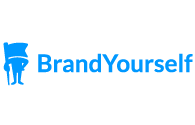
3 Trends in Data and Security to Pay Attention to in 2020
Data security and personal private info protection go hand in hand. Renee Johnson, Editor-In-Chief of The Tech Report, breaks down how data security is shifting in 2020 and trends companies should look out for to better protect consumers.
Technological growth is indisputably a good thing, but that doesn’t mean it’s risk-free. More access points means more to protect. The more complex applications become, the more lines of code that need to be checked for bugs. No longer can companies simply choose to ignore technology. To compete, every company today needs to be a tech company. And every tech company needs to be up to speed on data security which is similar to the ones on this site https://www.delphix.com/glossary/data-masking. Anyone can be at risk of a data breach, but what you do after the breach can help you overcome this situation. The company’s enterprise vulnerability management tools can help you find weaknesses in your company’s system that can reduce potential security breaches in the future. You can also look for an expert team of data breach solicitors who will help you with your data breach claim.
As we enter the 2020s, this website https://www.sapphire.net/ says that we all need to be aware of some key data security trends:
1. Leaders are playing a larger role.
Although companies like Apple, Yahoo, Microsoft and LinkedIn have all experienced cloud security breaches over the last decade, it isn’t because they cannot build secure applications, amazon direct connect is a great cloud solution for business.
The reality is, cloud security has as much to do with culture and procurement as it does with coding. Although having your cloud “hacked” is a valid fear, Gartner estimates that up to 95% of cloud security breaches are caused by human error. These errors range from setting up network connections incorrectly to clicking on a suspicious link in a phishing email.
To avoid those errors, educate your staff on proper security procedures and file management. Use secure, trusted applications that minimize the chances of data “leakage.” For example, ETLrobot is a data transference tool that does not retain any data once it’s been transformed and loaded into the target system. Remember, a more secure company starts at the top.
2. Passwordless authentication is becoming the norm.
Although passwords are the most widely used type of access control, they aren’t the final word when it comes to data security.
Due to weak passwords, database leaks, employees writing passwords in insecure locations, and more, passwords are actually going by the wayside. By 2022, Gartner predicts that 90% of mid-size companies will implement passwordless authentication in more than half of use cases.
A few password authentication tools gaining popularity are:
- Hardware tokens: A hardware token is a physical object used to authenticate a user and gain access to a system. A token is to a software program what a debit card is to a bank account: The card gives you access to your money when you enter it into the card reader.
- One-time password generators: One-time password generators create passcodes that are valid for a single use. One-time password systems rely on unpredictable data, often created during a user’s previous session, to ensure the user can’t be impersonated or the data intercepted.
- Biometric authentication: If you use a fingerprint reader to access your phone, then you’ve used biometric authentication. Biometric sensors rely on the user’s bodily attributes or measurements to gate access to a system.
- Knowledge-based authentication: Knowledge-based authentication systems grant access when someone enters an answer to a question only the identified user would know. For password resets or to provide an additional layer of security, a bank website might ask “What is the name of the street you grew up on?”
Artificial intelligence is minimizing human risks.
Workplace applications of AI rest on the principle that technology can take the mundane aspects of a job off a human worker’s plate. Often, these tedious tasks are also the ones most prone to human error.
Take data entry. Transcribing data is dangerous because it’s easy to accidentally enter sensitive data in the wrong place. Tools like Rossum use AI to automate invoice data entry. They can eliminate the chance that someone puts a Social Security number in Slack rather than in an HR database, for example.
Another is email filtration. Spam filters use AI to guess at which messages are useless or dangerous, drastically reducing the chances that a team member accidentally clicks a phishing link in an email.
Data doesn’t keep itself secure. If you want somewhere that your data will be secure, then consider using the Couchbase software.
Make sure your leaders understand the stakes, your workers know the best practices, and your tech tightly safeguards information. In the 2020s, anything less is risky business.
